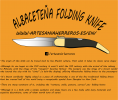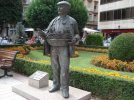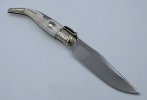- Joined
- Mar 4, 2018
- Messages
- 65
Good day guys and blade lovers,
I hope this post finds you all well and everything is good.
I am writing this post since on the last one made by Ray (thanks a lot Ray for your kind words, I hope you enjoy your folding knife for many years) a lot of users had doubts about the Spanish cutlery, where it comes from and specially where my folding knives came from.
That gave me idea of writing a blog on my website about the Spanish Folding knives tipology, I just published my first post yesterday and it can be found on the following address.
The idea is to give you more details about the Spanish cutlery, I started my blog with the folding knife from Albacete, since it's known worldwide and I will keep updating with the folding knife from Sevilla, the vendetta folding knives from France, etc.
So, since many of you prefer to read it all on the forums I will also post the post here, and I will keep doing it every week. I hope you guys like it and pardon my mistakes, my English is not flawless I am afraid.
------------------------------------------------------------------------------------------------------
FOLDING KNIVES TYPOLOGY – PART 1: THE FOLDING KNIFE FROM ALBACETE ¡OLE Y ODO!
The folding knife from Albacete is a classic within the typical Spanish knives, this folding knife has become a symbol of Albacete recognized worldwide.
Known abroad as the Spanish folding knife par excellence its origin dates back to the Muslim culture. However, we found the first references to this folding knife on the last years of the XV century. (at the very same time than the “Feria de Albacete!”, the best local festival chosen by the Spaniards), but its widespread use began in the XVII century, as one of the so-called attack-defense folding knives.
It would not be until the XIX century when the Albaceteña folding knife reached its reputation. The arrival of the railway to Albacete meant the opening of the city to the rest of Spain (and Europe). The arrival of an incessant group of travelers and visitors created a new business opportunity, and then the Navajero appeared. The navajero was a street vendor armed with a display belt who offered any kind of folding knife to the visitors, they usually stayed near the railway in order to get a maximum profit.
The older versions of the folding knife from Albacete was much bigger than the current one, the modern design stay loyal to its characteristic shape however it has a smaller size. The folding knife stopped being an attack-defense folding knife and becomes a tool, something you carry on your every day. In some cases, it is even considered a luxury product, an ornamental article that shows how wealthy is his owner or even a symbol of power.
This size reduction and any other aesthetic modifications happened because the prohibition of using any folding knife dictated by Felipe V in the year 1723. This suppose a turning point not only for Albacete, but for all national cutlery manufactures. It is notable that only the craftsman from Albacete and Barcelona managed to survive this prohibition since it was a serious blow for other cutlery areas, like Toledo, known for being the cradle of the sword makers on Spain, in fact, the sector entered on a very pronounced crisis, almost facing its extinction.
Moreover, this prohibition speeds up the disintegration of the craftsmen guilds, it’s on this very same moment when every artisan leaves their guilds in order to try to survive to the sad economic situation.
Luckily enough, the cutlery sector from Albacete overcame this situation, it’s in the XIX century when it starts to be known on Europe. Proof of this are the different travel books, manuals, economic reports, etc. which points out the cutlery from Albacete, and more than that, the folding knife from Albacete is a big success worldwide.
It’s on this time when the folding knife from Albacete reached its súmmum, some different variations of the folding knife of Albacete appeared but always keeping this curved shape, so we can find the anillas folding knives (with a ring-like mechanism), the fieles folding knife (similar to a penny knife without any locking system), the ventana folding knife, etc. They all born on the boiling mind of the artisan who takes their inspiration on the different iconic folding knives distributed throughout the Spanish geography.
Unfortunately, the belle époque of the folding knife from Albacete had an end, and it was at the end of the XIX century, a trend that would remain from the XX century onwards. The decline of the handmade cutlery of Albacete started with the industrial production of different cutlery products. The craftsmen number is already decimated and they withdrew this noble job, and the big factories of industrial cutlery from Albacete appeared.Nevertheless, the fenix reborn from its ashes, the cutlery from Albacete reborn on this new industrial production promotes Albacete to a new level, more than 80 cutlery makers appeared on that time. However, it all came with new problems to be faced, the new weapon regulations from the year 1981 and the manufacture of the Albacete cutlery products on third Asian countries devastated the cutlery sector. From this moment and onwards it’s time to educate the consumer on how to differentiate a handmade knife from Albacete from the copies made on China, but the damage was already done.
Luckily, the cutlery makers of Albacete (both Industrial and craftsmen) had a place to go, the new cutlery association was born, APRECU (Cutlery and associated association). This association is the owner of the quality brand “AB-Cuchillería”, that ensures the consumer that the product that they are buying has been entirely made on Albacete. (Not every knife manufacturer use it but it’s a nice starting point)
In order to conclude, I would like to show you a couple of curious facts, the first one is that the folding knife from Albacete has not been always a tool, certain folding knives was meant to be a symbol of the power of its owner, so we can find folding knives made with precious materials (gold, silver, diamonds, etc.) with baroque ornamentation and decorations, some of thenmare even impossible to be used due to their dimensions (exaggeratedly large), these pieces were made as a symbol of power but they were not meant to be used.
The second fact is that the apprentice of knife maker (craftsman), and in particular of a navajero (folding knife artisan/craftsman, different than the street seller), was so important on the XVII century that rigorous methods were established in order to safeguard the secrets of each craftsman. Therefore, being adopted by a Maestro (master/teacher) as an apprentice had certain formalities. Master and Apprentice had to signed a contract before the Escribano (the Scribe, which became the public notary on the following years).
The maestro would become like the apprentice’s father or guardian, he had to take charge of his/her pupil, taking full responsibility of the apprentice during this education period. The Master had to give food, clothing, footwear, a bed to sleep and an honest life to each apprentice.The apprentice had the obligation of serving in the house of the Master in every task that could be of assistance, not being authorized to leave by his will unless the Master expelled him/her of his guardianship. (If the apprentice was expelled by unfair reasons the Master had to pay him/her like it was a working contract.)
The Master had the obligation of teaching all his/her secrets to the apprentice, who after completing his/her training could work as an equal or even being a Master after the ending of the grace period stablished on the previous contract.
In order to finish off this post I would like to point out that, although much of this old knowledge has been lost, some of these secrets still live today in the hand of the few craftsmen who are left in Albacete, people who known the ins and outs of the edges, people who speak with their creations and people who understand this important knowledge already lost and forgotten but, no less valuable.
José Antonio Herreros.
Attachments
-
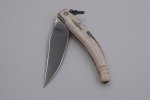 Ref-003-Navaja-clasica-albacete-ciervo-pulido-claveteada-laton-5.jpg39.2 KB · Views: 45
Ref-003-Navaja-clasica-albacete-ciervo-pulido-claveteada-laton-5.jpg39.2 KB · Views: 45 -
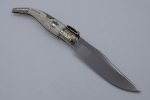 Ref-021-Navaja-clásica-Albacete-Ciervo-pulido-alpaca-pin-mosáico-3.jpg41.7 KB · Views: 41
Ref-021-Navaja-clásica-Albacete-Ciervo-pulido-alpaca-pin-mosáico-3.jpg41.7 KB · Views: 41 -
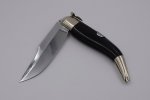 Ref-013-Navaja-Clásica-Albacete-búfalo-virola-rebajo-latón-2.jpg43 KB · Views: 42
Ref-013-Navaja-Clásica-Albacete-búfalo-virola-rebajo-latón-2.jpg43 KB · Views: 42 -
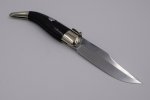 Ref-013-Navaja-Clásica-Albacete-búfalo-virola-rebajo-latón-1.jpg35 KB · Views: 42
Ref-013-Navaja-Clásica-Albacete-búfalo-virola-rebajo-latón-1.jpg35 KB · Views: 42 -
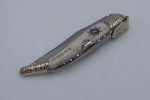 Ref-021-Navaja-clásica-Albacete-Ciervo-pulido-alpaca-pin-mosáico-6.jpg51.6 KB · Views: 40
Ref-021-Navaja-clásica-Albacete-Ciervo-pulido-alpaca-pin-mosáico-6.jpg51.6 KB · Views: 40 -
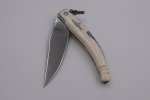 Ref-003-Navaja-clasica-albacete-ciervo-pulido-claveteada-laton-5.jpg39.2 KB · Views: 40
Ref-003-Navaja-clasica-albacete-ciervo-pulido-claveteada-laton-5.jpg39.2 KB · Views: 40 -
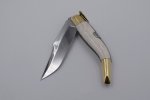 Ref-015-Navaja-Clásica-Albacete-Ciervo-pulido-virolas-latón-1.jpg45.2 KB · Views: 42
Ref-015-Navaja-Clásica-Albacete-Ciervo-pulido-virolas-latón-1.jpg45.2 KB · Views: 42
Last edited:

